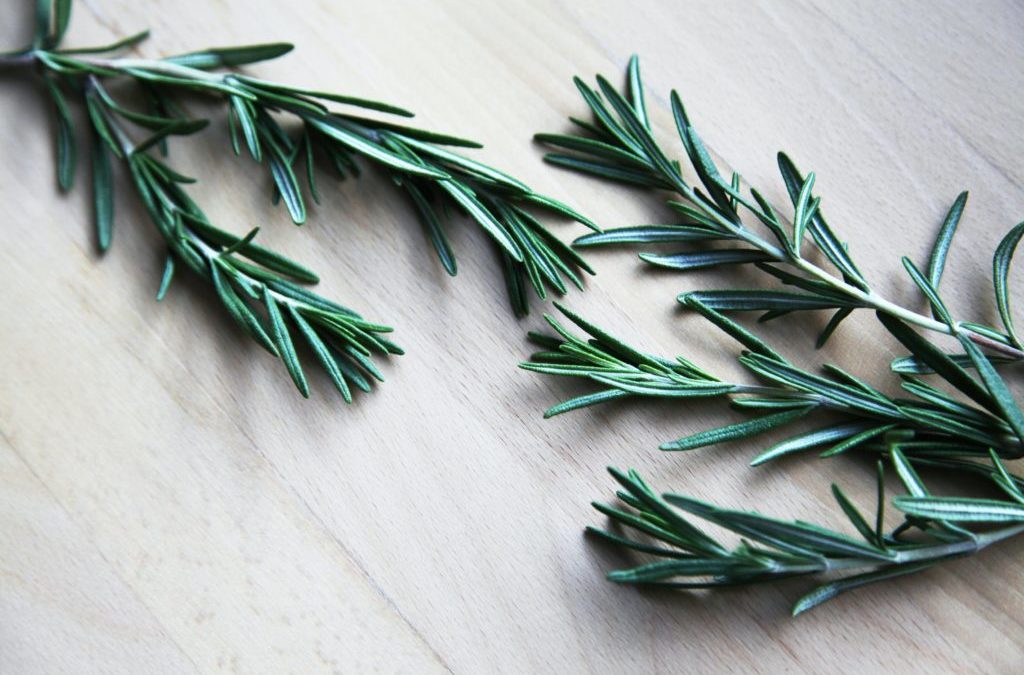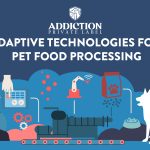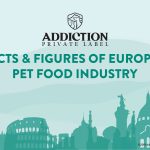The benefits of consuming plant foods are well known and have been ascribed, at least in part, to the antioxidant compounds present in plants. These unique natural molecules have been associated with counteracting the risk of heart disease, cancer, cataracts, and many other degenerative diseases of aging. Indeed, the health benefits of plant extracts have long been of interest to researchers and consumers alike and many labels such as “natural”, “plant based” “with natural plant extracts” are found on the labels of many different types of consumer products on the supermarket shelf.
For centuries, civilizations have used herbs and spices for preserving and enhancing their foods, as well as treating many ailments. In the modern food industry, plant extracts such as rosemary extract, sage extract, and green tea extract form the basis of natural food preservation in a variety of products.
However, some of these natural antioxidants, rosemary extract and green tea extract in particular are currently receiving considerable attention in human and animal nutrition because of the potential dual role of being able to preserve food and provide an antioxidant benefit to the animal.
What is oxidation and why does it matter
The oxidation of food products involves the addition of an oxygen atom or the removal of a hydrogen atom from the different chemical molecules found in food. Two principal types of oxidation that contribute to food deterioration are lipid auto-oxidation and enzyme-catalyzed oxidation. Lipid oxidation generally leads to off flavors associated with rancidity whilst enzyme-catalyzed oxidation tends to cause browning type reactions. Protein oxidation can also occur in food and this is an area of growing interest.
Autooxidation in food occurs when free radicals initiate oxidation of lipids within the food matrix, a process usually mediated by light, heat trace metals etc. Factors that are particularly important when determining the oxidative risk of a given diet include processing conditions, ingredients, and raw material quality.
The early steps of oxidation include the generation of reactive peroxyl radicals. These peroxyl molecules initiate a chain reaction in other molecules, resulting in hydroperoxides and more lipid free radicals. The cycle repeats until the supply of unsaturated lipids is exhausted. This cycle is called autooxidation. Measuring hydroperoxides in a material is a common measure of early autooxidation.
Hydroperoxides are colorless and odorless but they can interact with a large number of molecules in the living body and in foods. Foods and pet food hydroperoxides cause changes in texture, functionality, nutritive value, and integrity. In the body, hydroperoxides can result in lipid membrane damage, damage to organelles, and nucleic acid peroxidation. (Quiles JL et al, 2002, Bakala H et al, 2003 ).
The secondary products of oxidation are no less harmful and result in the off aromas and colour changes in foods that are usually described as rancidity but also lead to the destruction of nutrients. Further many of these secondary products are themselves highly reactive. Malonaldehyde, for example, can interact with proteins, amino acids, amines and DNA in living tissues, thus oxidation of food also has negative biological effects (Indart A et al, 2002).
Oxidation in biological systems occurs as a natural consequence of cell metabolism (McCord JM, 2000). Health problems occur when there is an imbalance between the amount of oxidation and antioxidant capacity of the living system (Gate L et al, 1999).
Excessive levels of oxygen radical species, particularly hydroxyl radicals can lead to lipid cell membranes undergoing oxidation and generating lipid peroxides and reactive oxygen species (ROS). The interaction of these molecules with other lipids, proteins and DNA are responsible for changes in membrane integrity, protein cross-linking, function, and transport, and importantly DNA mutations. Hence the use of antioxidants in foods may not only control oxidation in food but in addition, by reducing the exogenous oxidative load, may influence the primary causes of atherosclerosis, cancer, and other degenerative disorders (Krzanowski JJ. 1991, Barren et al, 2003, Gate et al, 1999, Schwedhelm E et al, 2003). This may be why humans and pets prefer fresh tasting food and generally avoid rancid foods, it is nature’s way of protecting us!
What are antioxidants?
Antioxidants are chain-breaking molecules. They can react with harmful peroxyl radicals, in foods and in living tissue, to form stable complexes and stabilize free radicals to prevent initiation or continuation of auto-oxidation. They also act as oxygen scavengers and chelators to reduce the likelihood of auto-oxidation occurring. All antioxidants ultimately are only able to meet a limited chemical demand and thus require good surface area coverage to ensure contact with radical species and to be effective In foods, oxidation is slowed through the addition of chemical antioxidants. In the human body, protection is provided by vitamins such as Vitamin E, C, and A, as well as enzymatic antioxidants like superoxide dismutase and glutathione peroxidase (Crawford DR & Davies KJ., 1994).
Rosemary extract: An herb that packs a powerful punch
Rosmarinus Officinalis L., or rosemary for short, is best known for its spice and flavoring qualities. However, rosemary has particularly high antioxidant activity in its ground and extracted form and this is what makes it so interesting to researchers in food and in living tissue. Carnosol and carnosic acid make up about 15% of the extracted form and account for almost 90% of its activity (Auromo et al, 1992). Rosmarinic acid is also an important antioxidant component and is associated with many of the positive biological impacts of rosemary. Other major constituents include urosolic acid, oleanolic acid and betulinic acid. These are not particularly strong antioxidants, but they may contribute to the anticarcinogenic properties of rosemary.
Rosemary extract has been demonstrated to be a highly effective antioxidant in many food systems, particularly in unsaturated fats and oils. Common applications include the use of rosemary extract to reduce lipid oxidation and maintain colour of fresh chilled meats during storage including steak, beef patties, sausages and turkey, preserving unsaturated fats and oils such as vegetable and fish and for speciality process applications such as freeze drying. Rosemary extract is also used successfully to extend the shelf-life of dry petfood and other extruded food products and may be more effective than other natural alternatives in range of applications due to its ability to function over a wide temperature range.
Remarkable rosemary
In addition to its efficacy as a food antioxidant, rosemary also appears to have very important biological properties that may benefit cardiovascular health, hepatic function inflammatory pathologies such as arthritis, bone health and may even play a prevention role in the development of certain cancers.
Cardiovascular health
Atherosclerosis is a progressive disease that results in the hardening and narrowing of arteries and compromised cardiovascular function. Atherosclerosis involves the deposition of endogenous oxidized low-density lipoproteins (LDL) in the endothelial layer of the arterial wall. Carnasol, carnosic acid, and rosemarinic acid, all active constituents of rosemary extract showed a dose-dependent inhibition of LDL oxidation in human aortic endothelial cells (Frankel et al, 1997). This suggests that the same molecules responsible for physical activity also play an important physiological role (Zeng et al, 2001).
Inflammatory pathologies
Reactive oxygen species (ROS) as well as reactive nitrogen species (RNS) can damage basic articular constituents and lead to the clinical expression of the inflammatory arthritis. Carnosol and carnosic acid, both active constituents of rosemary extract, can scavenge hydroxyl radicals in vivo (Auroma et al, 1996)and may have an application in inflammatory pathologies such as arthritis.
Hepatic function
The liver plays an important role in detoxification. If the capacity to detoxify is compromised, disease can result. Rosemary extract appears to function as an antioxidant and as an enhancer of the activities of glutathione-S-transferase (GST) and quinine reductase, key enzymes important in liver detoxification. There is now a body of literature suggesting a role for rosemary extract in liver function as an antioxidant protecting against inflammation and necrosis after hepatic damage, a detoxifying agent and as a chemopreventive agent.)
Cancer
Exposure of cells to exogenous or endogenous mutagens or carcinogens results in DNA damage, mutagenesis and tumour promotion.
The potential antimutagenic properties of rosemary were initially examined because reactive oxygen species (ROS) are known to be involved in cancer development. In a study by Minnunni et al, rosemary extract inhibited mutagenicity in a dose dependant manner in the AMES test with the bacterial tester strain Salmonella typhimurium TA102, a strain particularly susceptible to damage by reactive oxygen species. Further, this effect was achieved with a concentration 10 times lower than necessary for ascorbic acid (vitamin C).(Minnunni M et al, 1992).
There are now many studies evaluating rosemary extract in various stages of carcinogenesis. Further, rosemary components may be effective protectors against a wide range of carcinogens, making them a promising candidate in a chemoprotective program.
Bone health
Osteoclast differentiation is inhibited by rosmarinic acid through quenching of ROS (Omori et al., 2015). In addition, rosmarinic acid impairs the formation of advanced glycosylation products, which may include a reduction in glycosylation of bone scaffolding proteins. It is hypothesized that this process of bone scaffolding glycosylation contributes to reduced bone strength seen in patients with diabetes, though further study is needed (Ou et al., 2017).
Rutin, a polyphenol found in rosemary, thyme, cinnamon, cumin, and bay leaf, inhibits osteoclast formation through reduction of ROS and inhibition of RANKL signalling (Kyung et al., 2008). In ovariectomized mice, treatment with rutin prevents bone loss and stimulates increased bone mineral density (Wang et al., 2017).
These and potentially other polyphenols in herbs and spices show promise for bone health in vitro and in animal studies. The observed benefits of dietary patterns such as the Mediterranean diet with regard to bone health may be partially due to its high herb and spice content (Byberg et al., 2016)
Plant power
Plant extracts such as rosemary extract possess unique and potent physical and biological properties. Rosemary extract in particular, in addition to its excellent properties as a food antioxidant, it may also have a positive impact on cardiovascular health, liver function, progression of inflammatory based diseases such as arthritis, and even the development of cancer. In the future, many more plant extracts used in food may also prove to have functional health benefits.
The addition of antioxidants for both freshness and biological benefits represents a new era in the design of functional foods.
Freshness never felt better!
Rahman I, Tomasi A.Free Radic Res. 2003 Apr;37(4):349-54
Thrusfield M. Acta Vet Scand Suppl 1988;84:57-65
Quiles JL, Farquharson AJ, Simpson DK, Grant I, Wahle KW.Br J Nutr 2002 Sep;88(3):225-34; discussion 223-4
Bakala H, Delaval E, Hamelin M, Bismuth J, Borot-Laloi C, Corman B, Friguet B.Eur J Biochem 2003 May;270(10):2295-302
Davies MJ. Biochem Biophys Res Commun 2003 Jun 6;305(3):761-70
Indart A, Viana M, Grootveld MC, Silwood CJ, Sanchez-Vera I, Bonet B.Free Radic Res 2002 Oct;36(10):1051-8
Crawford DR, Davies KJ., 1994 Environ Health Perspect 1994 Dec;102 Suppl 10:25-8
McCord JM.Am J Med 2000 Jun 1;108(8):652-9
Gate L, Paul J, Ba GN, Tew KD, Tapiero H. Biomed Pharmacother 1999 May;53(4):169-80
Schwedhelm E, Maas R, Troost R, Boger R. Clin Pharmacokinet 2003;42(5):437-59
Baron JA, Cole BF, Mott L, Haile R, Grau M, Church TR, Beck GJ, Greenberg ER. J Natl Cancer Inst 2003 May 21;95(10):717-22
Krzanowski JJ. J Fla Med Assoc 1991 Jul;78(7):435-8
Aruoma OI, Halliwell B, Aeschbach R, Loligers J. Xenobiotica 1992 22:257-268
Martinez-Tome M, Jimenez AM, Ruggieri S, Frega N, Strabbioli R, Murcia MA. J Food Prot 2001 Sep;64(9):1412-9
Zeng HH, Tu PF, Zhou K, Wang H, Wang BH, Lu JF. Acta Pharmacol Sin 2001 Dec;22(12):1094-8
Frankel E. et al J. Ag and Food Chem, 1997 Vol 45 (3), pp 578-582
Basaga, H., Tekkaya, C., Acikel, F.1997 Food & science Technology(london) 30(1):pp 105-108
Hadjigogos K. Panminerva Med 2003 Mar;45(1):7-13
Aruoma OI, Spencer JP, Rossi R, Aeschbach R, Khan A, Mahmood N, Munoz A, Murcia A, Butler J, Halliwell B. Food Chem Toxicol 1996 May;34(5):449-56
Aqel M.B., Int J of Pharmacognosy, Vol 30, No. 4, 1992, pp281-288
Khativ S. et al. Fitoterapia, Vol 69, No. 6, 1998, pp 502-506
Sotelo-Felix JI, Martinez-Fong D, Muriel P, Santillan RL, Castillo D, Yahuaca P. J Ethnopharmacol 2002 Jul;81(2):145-54
Singletary KW, Rokusek JT. Plant Foods Hum Nutr 1997;50(1):47-53
Zhu BT, Loder DP, Cai MX, Ho CT, Huang MT, Conney AH. Carcinogenesis 1998 Oct;19(10):1821-7
Offord EA, Mace K, Avanti O, Pfeifer AM. Cancer Lett 1997 Mar 19;114(1-2):275-81
Debersac P, Heydel JM, Amiot MJ, Goudonnet H, Artur Y, Suschetet M, Siess MH. Food Chem Toxicol 2001 Sep;39(9):907-18
Offord EA, Mace K, Ruffieux C, Malnoe A, Pfeifer AM. Carcinogenesis 1995 Sep;16(9):2057-62
Minnunni M, Wolleb U, Mueller O, Pfeifer A, Aeschbacher HU. Mutat Res 1992 Oct;269(2):193-200
Slamenova D, Kuboskova K, Horvathova E, Robichova S. Cancer Lett 2002 Mar 28;177(2):145-53
Plouzek CA, Ciolino HP, Clarke R, Yeh GC. Eur J Cancer 1999 Oct;35(10):1541-5
Singletary KW, Nelshoppen JM. Cancer Lett 1991 Nov;60(2):169-75
Singletary K, MacDonald C, Wallig M. Cancer Lett 1996 Jun 24;104(1):43-8
Calabrese V, Scapagnini G, Catalano C, Bates TE, Dinotta F, Micali G, Giuffrida Stella AM. Int J Tissue React 2001;23(2):51-8
Calabrese V, Scapagnini G, Catalano C, Bates TE, Dinotta F, Micali G, Giuffrida Stella AM. Int J Tissue React 2001;23(2):51-8
Huang MT, Ho CT, Wang ZY, Ferraro T, Lou YR, Stauber K, Ma W, Georgiadis C, Laskin JD, Conney AH. Inhibition of skin tumorigenesis by rosemary and its constituents carnosol and ursolic acid.
al-Hader AA, Hasan ZA, Aqel MB. J Ethnopharmacol 1994 Jul 22;43(3):217-21
Erenmemisoglu A, Saraymen R, Ustun S. Pharmazie 1997 Aug;52(8):645-6
Phytother Res 2002 Jun;16(4):383-6
Alarcon-Aguilar FJ, Jimenez-Estrada M, Reyes-Chilpa R, Roman-Ramos R. J Ethnopharmacol 2000 Sep;72(1-2):21-7







